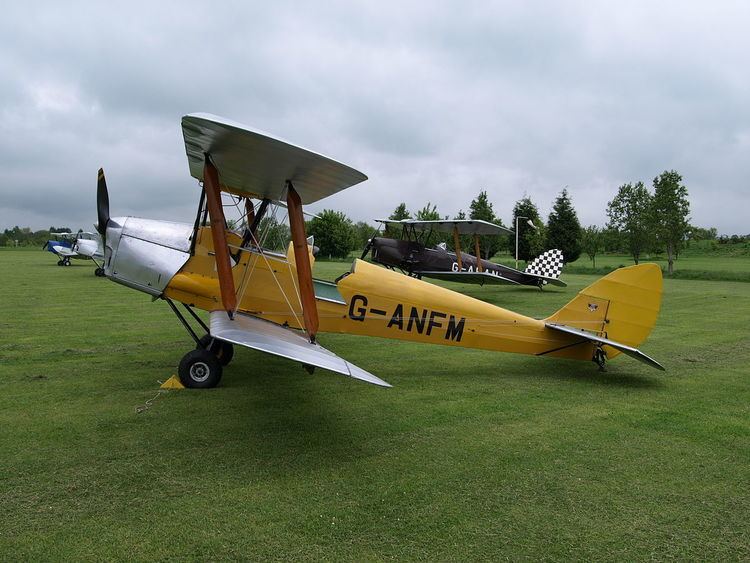 | ||
In aviation, stagger is the relative horizontal fore-aft positioning of stacked wings in a biplane, triplane, or multiplane.
Contents
An aircraft is said to have positive stagger, or simply stagger, when the upper wing is positioned forward of the lower (bottom) wing, Examples include the de Havilland Tiger Moth or Stearman. Conversely, an aeroplane is said to have negative stagger in unusual cases where the upper wing is positioned behind the lower wing, as in the Sopwith Dolphin or Beech Model 17 Staggerwing. An aircraft with the wings positioned directly above each other is said to have unstaggered wings, as in the Sopwith Cuckoo or Vickers Vildebeest.
Measurement
The value sometimes expressed as a distance, s say, but it may also be written as a fraction or percentage of the 'gap' (distance g between wings), i.e. s/g. It may also be presented as an angle equal to tan−1(s/g). The Gloster TSR.38 had a stagger of 0.91 m and a gap of 2.0 m, so the stagger might be written as 0.91 m, 0.455, 45.5% or 24.5°. s is the distance from the leading edge of the upper wing along its chord to the point of intersection of the chord with a line drawn perpendicularly to the chord of the upper wing at the leading edge of the lower wing, all lines being drawn in a plane parallel to the plane of symmetry.
Effects
As a general rule, there is a tendency for the upper wing to contribute a greater proportion of the total lift than the lower with positive stagger, and less with negative stagger. Increase in positive stagger also tends to move the centre of lift forward on the upper wing and backward on the lower wing. When unstaggered, the centres of lift for upper and lower wings are almost coincidental.
Positive stagger is by far the most common, as this positioning of the upper wing(s) allows better visibility for the crew as well as increased aircraft longitudinal stability, aerodynamic efficiency and maximum lift.
